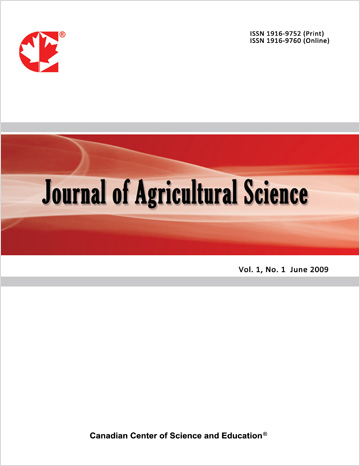Assessment the Phytotoxic Effects of Prosulfuron on Wild Sunflower (Helianthus annuus L.) in Laboratory and Nursery Conditions
- Ma. Eugenia Cisneros-López
- Miguel Ángel Valdez-Hernández
- Martín Espinosa-Ramírez
- José Luis Arispe-Vázquez
- Juan Manuel Covarrubias-Ramírez
- Rosendo Hernández-Martínez
Abstract
This study evaluated the effect of the herbicide prosulfuron on two wild sunflower populations from northern Tamaulipas, México, which differed in their history of herbicide exposure. Population C12 originated from a farm with documented history of routine prosulfuron applications, meanwhile, C36 had no prior exposure. A bioassay was conducted under both laboratory and nursery conditions, evaluating visual damage, plant height, leaf necrosis, and electrolyte leakage over 28 days after application (DAA). Prosulfuron induced foliar chlorosis in apical bud within seven days, which progressed to growth inhibition and necrosis, with more pronounced symptoms in susceptible C36 population. Plant height was significantly reduced in C36, reaching nearly 50% reduction at 14 DAA, while C12 exhibited only at 4% reduction. Electrolyte leakage further supported these findings, showing a 74% solute loss in C36 compared to 14.7% in C12 at 21 DAA. Microscopic analyses revealed cellular disruptions consistent with the action mode of acetolactate synthase (ALS) inhibitors. Visual assessments demonstrated poor control of the C12 population despite previous exposure, suggesting the potential selection of tolerant individuals, whereas C36 was highly susceptible. These results underscore the importance of integrating physiological, morphological and cellular parameters to detect early signs of herbicide resistance. Notably, cellular electrical conductivity proved to be an effective preliminary screening tool for distinguishing tolerant populations, offering a practical alternative to more time-consuming bioassays. Overall, the findings indicate the presence of a potentially tolerant biotype of wild sunflower in northern of Tamaulipas, and highlight the urgent need for integrated weed management strategies to prevent the further development of resistance and to sustain the efficacy of chemical control in sorghum and other cereal crops.
- Full Text:
 PDF
PDF
- DOI:10.5539/jas.v17n11p28
Journal Metrics
- h-index: 67
- i10-index: 839
- WJCI (2023): 0.884
- WJCI Impact Factor (2023): 0.196
Index
- AGRICOLA
- AGRIS
- BASE (Bielefeld Academic Search Engine)
- Berkeley Library
- CAB Abstracts
- ChronosHub
- CiteSeerx
- CNKI Scholar
- Copyright Clearance Center
- CrossRef
- DESY Publication Database
- DTU Library
- e-Library
- EBSCOhost
- EconPapers
- Elektronische Zeitschriftenbibliothek (EZB)
- EuroPub Database
- Excellence in Research for Australia (ERA)
- Google Scholar
- Harvard Library
- IDEAS
- iDiscover
- Jisc Library Hub Discover
- JournalTOCs
- KindCongress
- LIVIVO (ZB MED)
- LOCKSS
- Max Planck Institutes
- Mendeley
- MIAR
- Mir@bel
- NLM Catalog PubMed
- Norwegian Centre for Research Data (NSD)
- Open J-Gate
- OUCI
- PKP Open Archives Harvester
- Polska Bibliografia Naukowa
- Qualis/CAPES
- RefSeek
- RePEc
- ROAD
- ScienceOpen
- Scilit
- SCiNiTO
- Semantic Scholar
- SHERPA/RoMEO
- Southwest-German Union Catalogue
- Standard Periodical Directory
- Stanford Libraries
- SUDOC
- Swisscovery
- Technische Informationsbibliothek (TIB)
- Trove
- UCR Library
- Ulrich's
- UniCat
- Universe Digital Library
- WorldCat
- WRLC Catalog
- Zeitschriften Daten Bank (ZDB)
Contact
- Anne BrownEditorial Assistant
- jas@ccsenet.org
